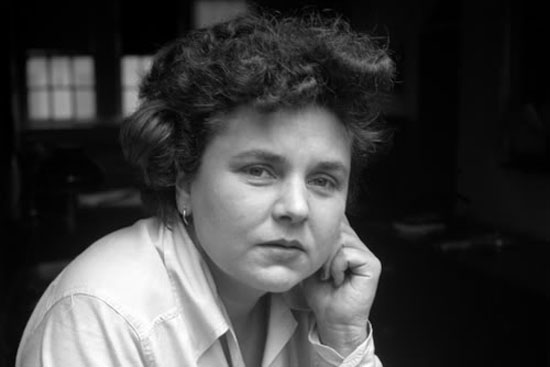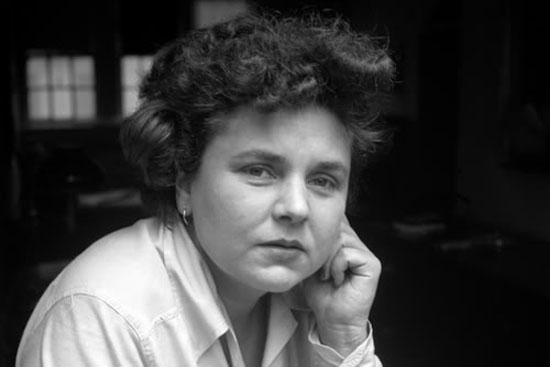Emily Dickinson- Emily Dickinson, one of America’s greatest poets, is known for her unusual life of self-imposed social seclusion. She wrote poetry of great power and most of her major works revolved around the themes of immortality, nature of death and time. Within short, compact phrases, she expressed far-reaching ideas.
I Heard a Fly Buzz – When I Died- “I Heard a Fly Buzz- When I Died” is the informal name for an untitled poem included in the volume, The Complete Poems by Emily Dickinson. In this poem, the narrator is on her deathbed, describing a chilling image of the progression of the narrator’s death.
Setting of I Heard a Fly Buzz-
In this classic poem by Emily Dickinson, the speaker is a dead person who is reflecting back on the last moments of her life, the moment of her death and the progression of her death. The setting of the poem can be observed as changing with each stanza, the first stanza provides the image of a deathbed with the narrator on it, reflecting upon her last moments, then the view magnifies to the mourning members and the setting changes to a room. The last stanza pulls us out of the room and the deathbed to provide a close-up of a buzzing fly, ending the poem with the narrator being in some dark, faraway place.
Poetic Devices in I Heard a Fly Buzz-
Visual Imagery: The fly “interposed…between the light and me” – visual of a fly flying around the room; “The windows failed and then I could not see to see” – the windows being the eyes and the imagery suggesting lack of vision and darkness.
Alliteration: “With blue, uncertain, stumbling, buzz”
Aural Imagery/Sound: “the stillness in the room” in contrast to the “breathes were gathering firm”; the buzzing of fly being heard and the emphasis on the buzz.
Metaphor: “the windows” – metaphor for the eyes of the narrator.
Style-
“With Blue – uncertain – stumbling Buzz – (A)
Between the light – and me – (B)
And then the Windows failed – and then (C)
I could not see to see” (B)
Summary of I Heard a Fly Buzz-
Emily Dickinson here provides a chilling picture of the experience of a person’s last moments of death, through her imagination. The speaker says that she heard a fly buzz as she lay on her deathbed. The room was as still as the air between “the Heaves” of a storm. The eyes of the speaker’s loved ones had cried themselves out, readying them for “that last onset”, metaphorically the moment when “the King/ Be witnessed…in the room… ”. The speaker made a will and signed to her destiny, accepting her last moments of death and then hears a fly buzzing. It interposed itself between the speaker and the light, and gradually, the speaker loses her vision, “windows failed”, this loss of vision representing the ultimate death of the narrator.
Critical Analysis of I Heard a Fly Buzz-
This poem deals with Dickinson’s recurrent preoccupations with death. She writes this poem from a view point of a person at the very edge of death, the persona describing the experience of dying. The speaker’s attachment to the physical world is shown diminishing gradually, losing the sense of vision being the final thread. The poem also rejects the Christian belief about the spirituality of life and death, for instead of the vision of light, there is total darkness and oblivion at the end.
Tone of I Heard a Fly Buzz-
The tone of the poem is calm and quiet, ironic for its theme of death. The calmness in the tone provides an image of a figure floating in the air, almost like that of a ghost and this solemnness in the tone is broken only by the emergence of the buzzing fly, returning to absolute stillness at the end. The tone/the poem’s speaker suggests that there is a calmness in the transgression from the storm of life to death.
Conclusion- “I Heard a Fly Buzz – When I Died” by Emily Dickinson asserts the poet’s belief in the calmness in death. The detachment from the physical being towards darkness, stillness and oblivion is the definition of death, according to the poem.
Some online learning platforms provide certifications, while others are designed to simply grow your skills in your personal and professional life. Including Masterclass and Coursera, here are our recommendations for the best online learning platforms you can sign up for today.
The 7 Best Online Learning Platforms of 2022
- Best Overall: Coursera
- Best for Niche Topics: Udemy
- Best for Creative Fields: Skillshare
- Best for Celebrity Lessons: MasterClass
- Best for STEM: EdX
- Best for Career Building: Udacity
- Best for Data Learning: Pluralsight
















